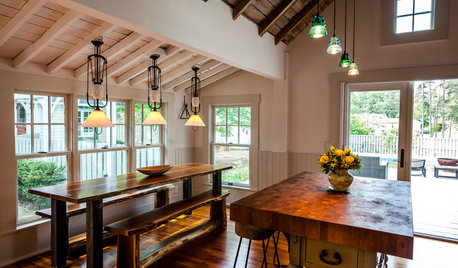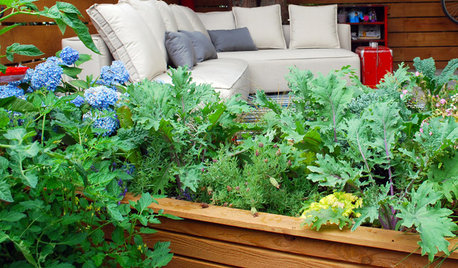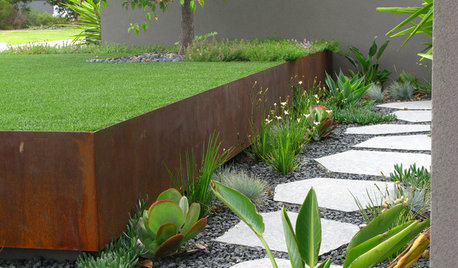New gardener, vegetable garden questions
gamebird
18 years ago
Related Stories

FARM YOUR YARDAdvice on Canyon Farming From L.A.'s Vegetable Whisperer
See how a screened garden house and raised beds help an edible garden in a Los Angeles canyon thrive
Full Story
FARM YOUR YARD9 Ways to Change Up Your Vegetable Garden for the Coming Season
Try something new for edible plantings that are more productive than ever
Full Story
EDIBLE GARDENSGarden BFFs? Why Your Vegetables Are Begging for Companion Plants
Foster friendships among plants for protection from pests, pollination support and color camaraderie
Full Story
KITCHEN DESIGNKitchen of the Week: Rustic Space Opens to Herb and Vegetable Gardens
Well-chosen recycled and repurposed features create a North Carolina cottage kitchen with a distinctive look and personality
Full Story
MOST POPULARHow to Start a Cool-Season Vegetable Garden
Late summer and late winter are good times to plan and plant cool-season crops like salad greens, spinach, beets, carrots and peas
Full Story
FARM YOUR YARDCool-Season Vegetables: How to Grow Lettuce
Leaf, butterhead, crisphead or romaine — lettuce is best harvested in the cool weather of spring and fall
Full Story
EDIBLE GARDENS8 Surefire Vegetables and Herbs for Beginning Gardeners
Learn the edible plants that are popular and easy to grow in a backyard or container garden
Full Story
GARDENING GUIDESStep Right Outside for Fresh Herbs and Vegetables
Decks and patios can be convenient spots for edibles, and sometimes they even offer advantages over backyard gardens
Full Story
GARDENING GUIDESNo-Regret Plants: 5 Questions Smart Shoppers Ask
Quit wasting money and time at the garden center. This checklist will ensure that the plants you're eyeing will stick around in your yard
Full Story
LANDSCAPE DESIGN7 Questions to Ask Before Laying Stepping Stones
These broken-up pathways invite you to put a spring in your step — while adding functionality to the garden
Full StorySponsored






jel48
gamebirdOriginal Author
Related Professionals
Deer Park Landscape Architects & Landscape Designers · Grand Haven Landscape Architects & Landscape Designers · Ilchester Landscape Architects & Landscape Designers · Otsego Landscape Architects & Landscape Designers · Brentwood Landscape Contractors · Wilmington Landscape Contractors · Huntley Landscape Contractors · New Baltimore Landscape Contractors · Panama City Beach Landscape Contractors · Ponte Vedra Beach Landscape Contractors · Red Oak Landscape Contractors · Selden Landscape Contractors · Wailuku Landscape Contractors · Westford Landscape Contractors · Weymouth Landscape ContractorsgamebirdOriginal Author
karenn3
Julie
loodean
althea_gw
gamebirdOriginal Author
jel48
loodean
sallym